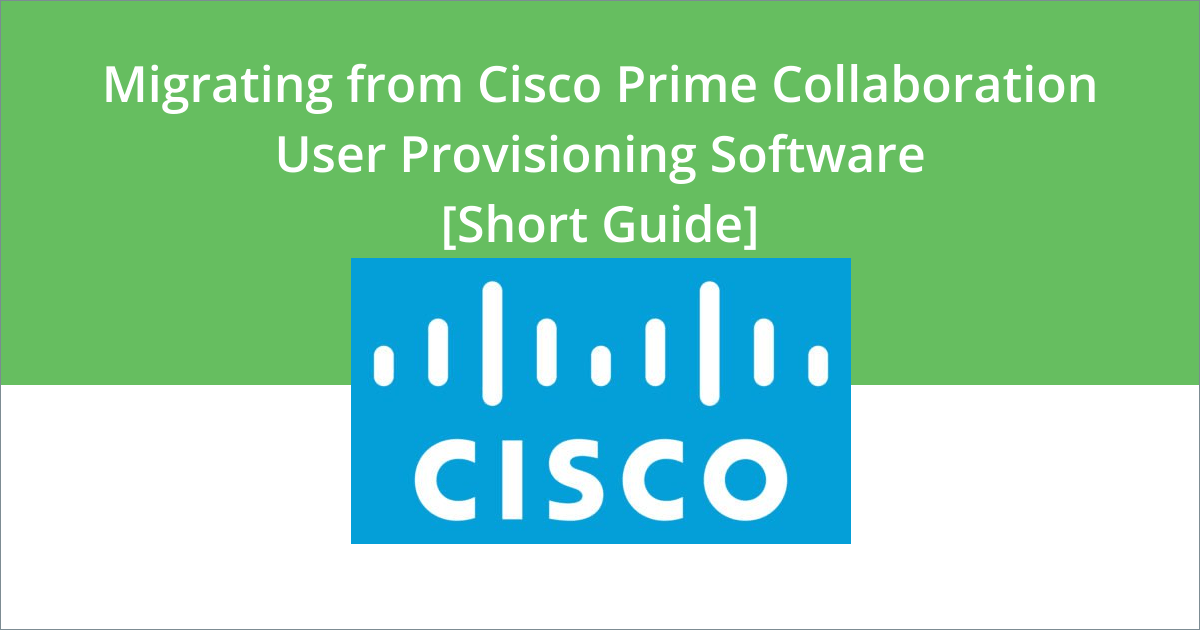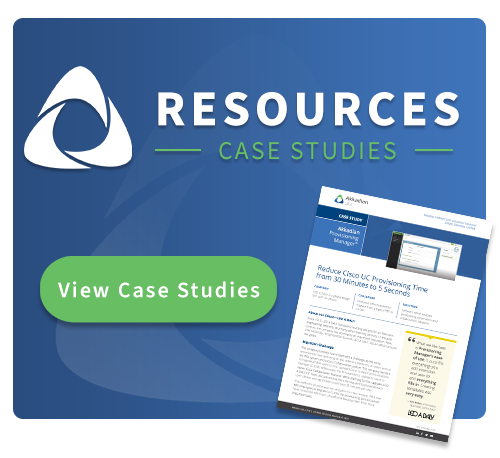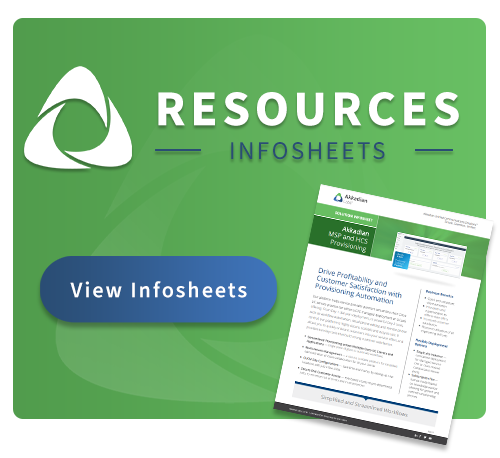Cisco Prime Collaboration Provisioning is entering end-of-sale and end-of-life. For enterprises using this product, some important dates are fast approaching. If your company hasn’t made a migration plan yet, here’s what you need to do.
In April 2021, Cisco announced the end-of-sale and end-of-life for its Cisco Prime Collaboration Provisioning (CPCP) software product. Maintenance releases are scheduled to end on Oct. 14, 2022, with the last date of service on Oct. 31, 2024.
Without a plan for migration, your company will be left high and dry when it comes to user provisioning software for unified communications. Losing support for such a key platform creates problems. The lack of maintenance updates introduces security vulnerabilities. The loss of regular updates and user support can hamper your organization as it grows and evolves.
User provisioning software is a critical part of organizations’ user management processes. Cisco will not be replacing CPCP. That means companies need a plan to migrate to a third-party option.
In this blog, we’ll touch on why you need to have a plan to migrate to another solution. Then we’ll cover what you should look for when choosing a new user provisioning solution.
Why Migrating from Cisco Prime Collaboration Provisioning is Vital
Manually provisioning just one user can be a long and error-prone task. Scale that process up – to multiple users over many different platforms and applications – and you can see how having a software solution in place for UC provisioning can help immensely.
User provisioning software helps UC engineers be more productive and accurate, reducing the risk of outages across your network by preventing critical errors. On top of that, the right user provisioning solution can provide greater security by preventing accidental or deliberate service disruptions with role-based access.
With CPCP soon to be an obsolete product, you’ll need another way to maintain and improve your provisioning workflows. Here are some steps to consider as you formulate a plan for migration.
Ensuring a Smooth Migration from CPCP: 4 Easy Steps
#1. Stay Calm
Cisco announced the CPCP end-of-sale and end-of-life phase over a year ago now, but a few critical dates are still two years off. You have time to make a plan to migrate your provisioning software to a new provider.
Plus, there are solutions out there that can quickly and easily integrate with your existing UC tech stack. So, take a deep breath, and get to work.
#2. Define (or Update) Your UC Needs
As you start looking at provisioning software vendors, take time to make sure you have your UC needs in order – for present and future states.
If your company is growing, your UC demands will change. Work with a provider that is flexible enough to grow and scale with your enterprise.
Taking those needs and future-state needs into account, create a roadmap for your migration. Talk to key stakeholders around your enterprise to get their input so you can tailor your solution to their needs as well. Your UC provisioning solution can and should be built to suit everyone in your enterprise.
#3. Take A Phased Approach
It can be tempting to roll out your new UC solution across all your sites and applications but take it piece by piece. Start with a few sites and some lower priority applications to avoid any major-service disruptions. Once that’s done and all goes well, you can move on to other sites and higher-priority applications.
This phased approach helps your UC administrators and IT teams work out any problems early, so you can avoid delays and downtime on critical applications.
#4. Consider A Third-Party Vendor
Hybrid enterprise UC stacks are complicated, multi-vendor tech solutions that are built custom to the enterprise that uses them. That’s why it’s important to look for a third-party UC vendor with a variety of native connectors that can work with your enterprise’s complicated or hybrid UC tech stack.
As we’ve talked about, a third-party vendor can make migration easier for your enterprise. So, what should you look for in a partner?
Working with a Provisioning Partner for CPCP Migration
User provisioning software allows companies to manage user information easily and reliably across multiple systems and applications. CPCP has never been the most user-friendly product, and it only supports Cisco’s on-premise platforms, not Webex.
Take this end-of-life opportunity to upgrade your enterprise to a better user provisioning solution. Here are some qualities you need to look for in a provisioning provider and platform.
#1. Speed
Productivity is key in the world of UC engineers. Your provisioning solution needs to be fast at what it does to make provisioning a simple, quick task. That way your engineers have more time on their plates to handle more strategic initiatives – not manual, repetitive provisioning work.
#2. Consistency
On that same note, manual and repetitive processes tend to result in errors. An ideal UC provisioning solution will eliminate these errors and inconsistencies with templates that assure accounts are built with standard configurations.
#3. Security
Provisioning solutions must be secure. That means having features like role-based access that can protect against accidental (or deliberate) service disruptions and outages of key UC applications.
#4. Expertise
Cisco products are, as we know, complicated. Don’t assume all UC provisioning vendors know how to navigate them, let alone make the process of managing them easier. Find a Cisco expert.
Conclusion
Migrating from Cisco Prime Collaboration Provisioning doesn’t have to be complicated. Define your needs, put a plan together, and find a provisioning partner that can make the transition seamless and your MACD workflows automated and repeatable.
If your enterprise needs to migrate from CPCP, contact us to learn more about how to future-proof your user provisioning software.



